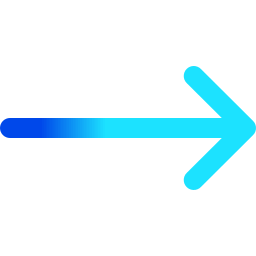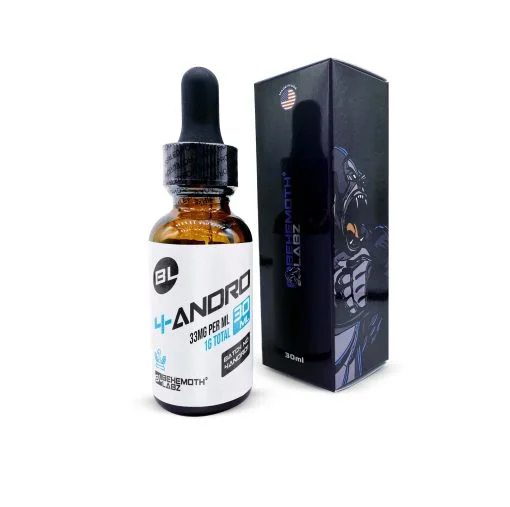SARMs
Comparing MK 677 vs RAD 140: Key Differences and Similarities
MK-677 and RAD-140 are two different synthetic compounds. They share some key similarities as well as differences. Some of the key similarities are their potential benefits and their use in experimental models during laboratory research trials. At the same time, they also differ from each other in mechanisms and type.
Let’s discuss in detail the nature, key similarities, and differences between RAD 140 and MK 677 in this blog. Read this blog till the end!
What is MK 677, and How Does It Work?
MK677 is a synthetic growth hormone secretagogue. It is also known as Ibutamoren and Nutrobal. Growth hormone secretagogues are compounds that modulate pathways related to the production of growth hormones in laboratory research models. MK677, being a growth hormone secretagogue, also influences the patterns related to growth hormones.
For influencing growth hormone patterns, MK677 may mimic the effects of the ghrelin receptor, which is also known as the hunger hormone. Ghrelin is responsible for growth hormone production and IGF-1, a growth factor in laboratory models. MK677 may also do the same by mimicking the effects of ghrelin hormones in experimental models in clinical trials.
What is RAD 140 and How Does It Work?
RAD 140 is a synthetic SARM. It is also known by other names, such as testolone. It is designed to mimic anabolic activities by particularly targeting muscle hypertrophy and skeletal patterns in research models in laboratory trials. This property of particular targeting differentiates it from traditional anabolic steroids, which also show their influence in other areas, as well as in research subjects.
After entering research subjects, it may exhibit the natural effects of testosterone, modulating muscle hypertrophy and osteoblast cell activities in research subjects in research trials. Furthermore, it may also influence lipolysis in animal models, as witnessed in the laboratory trials.
Key Similarities Between MK 677 and RAD 140
Though RAD 140 is a synthetic SARM and MK677 is a growth hormone secretagogue, they also share key similarities. Here are the key similarities between MK-677 and RAD 140:
Alternatives to Anabolic Steroids
Both MK677 and RAD 140 are used as alternatives to traditional anabolic steroids in animal models in laboratory trials. They are used to influence pathways related to muscle hypertrophy and lipolysis in research models during clinical trials.
Muscle Hypertrophy
These compounds are also used to modulate muscle hypertrophy in research subjects in research trials. MK677 may enhance muscle hypertrophy by modulating the patterns associated with growth hormone production in experimental models. On the other hand, RAD 140 may also modulate muscle patterns by mimicking the natural effects of testosterone in research subjects.
Fat Loss
Both MK677 and RAD 140 also have a similar benefit of modulating lipolysis (fat loss) in research subjects. RAD 140 is used to modulate fat loss pathways in research subjects by accelerating lipolysis, which is the breakdown of fat molecules. On the other hand, MK677 may also affect the patterns associated with lipolysis, but by influencing the patterns of growth hormone secretion in clinical models.
Selective Action
Both of these compounds are used for selective action. MK 677 is used to selectively target muscle hypertrophy, lipolysis, and skeletal integrity in research models. On the other hand, RAD 140 also selectively binds to androgen receptors in the muscle and bone tissues of animal models in clinical trials.
Skeletal Integrity
These compounds are also used to improve skeletal integrity in laboratory models during research trials. MK677 may impact the patterns associated with skeletal integrity by influencing the pathways of the secretion of growth hormones. The growth hormones may strengthen skeletal integrity in research subjects. On the other hand, RAD 140 may also modulate skeletal health pathways by stimulating the activity of osteoblast cells, which facilitates the formation of new bones in laboratory models during research trials.
Key Differences Between MK 677 and RAD 140
The key differences between MK 677 and RAD 140 are as follows:
Type
MK 677 is a growth hormone secretagogue. It means it is used to influence the secretion of growth hormones. On the other hand, RAD 140 is a synthetic SARM and an alternative to traditional anabolic steroids.
Mechanism
MK 677 works by influencing the pituitary gland of non-human research models to accelerate the secretion of growth hormones. On the other hand, RAD 140 binds to androgen receptors in muscle and bone tissues of research models in clinical investigations. After binding, it may mimic the effects of natural testosterone.
Primary Purpose
The primary purpose of MK 677 is to modulate muscle hypertrophy, aging, and skeletal health pathways by influencing the secretion of growth hormones in animal models in research trials. On the other hand, the primary purpose of RAD 140 is to affect muscle hypertrophy and influence lipolysis.
Effect on Testosterone
MK677 does not affect the testosterone levels of research models. On the other hand, RAD 140 may suppress testosterone levels in research subjects during research investigations. Post-Cycle Therapy (PCT) is also recommended after experimenting with SARMs, such as RAD-140, for research purposes.
Which Option is Best for Laboratory Research?
There are no research parameters that can identify the best choice between two SARMs. The best option depends on multiple factors. For instance, it depends on the research environment, the health status of research models, the objectives, and the goals of the research trials.
In this case, it is advisable to list research goals, objectives, and requirements, and then align them with the research environment. After that, it is suggested to choose accordingly.
Final Thought
RAD 140 and MK 677 are two synthetic compounds. RAD 140 is a synthetic SARM, whereas MK 677 is a synthetic growth hormone secretagogue. They share similarities as well as differences. Key similarities are influencing muscle, skeletal health, and fat loss pathways in research models. Key differences are different mechanisms of action and various primary purposes.
Frequently Asked Questions (FAQs)
Does MK677 affect the patterns related to testosterone levels in research models?
No, MK677 is unlikely to alter the patterns related to testosterone levels in experimental models during clinical trials. It may only affect the pathways linked with the levels of growth hormones.
Can research models use both MK677 and RAD 140 together?
Yes, both MK-677 and RAD-140 may be used together in clinical trials for research studies.
Which one is best for muscle hypertrophy in research models: RAD 140 or MK677?
Both are best for muscle hypertrophy. They only have different mechanisms to influence muscle hypertrophy. RAD 140 influences muscle patterns by binding to androgen receptors in the muscle tissues of research models. On the other hand, MK 677 improves muscle pathways by influencing the secretion of growth hormones in experimental models.
Is PCT necessary for research models after using RAD 140 and MK677?
PCT is only necessary after using RAD 140. On the other hand, no PCT is required for MK677.
Do MK677 and RAD 140 cause side effects?
Yes, both MK-677 and RAD-140 may cause mild to moderate side effects in research subjects. These side effects are nausea, headache, vomiting, and hormonal imbalance in animal models during clinical research.
Which one is used for anti-aging effects: RAD 140 or MK 677?
MK677 is used to affect anti-aging pathways, as it may influence the production of growth hormones in research models. The growth hormones, in turn, may reduce the pathways related to the effects of aging, keeping research models physically healthy, as observed in non-human model trials.
References
- Hansen, B. Schested, et al. “Pharmacological characterisation of a new oral GH secretagogue, NN703.” European journal of endocrinology 141.2 (1999): 180-189.
- Loss, Fat. “What is Ibutamoren? A Comprehensive MK 677 Review.”
- Svensson, Johan. “Growth hormone secretagogues.” Expert Opinion on Therapeutic Patents 10.7 (2000): 1071-1080.
- Leung, Kenneth, et al. “RAD-140 drug-induced liver injury.” Ochsner Journal 22.4 (2022): 361-365.











